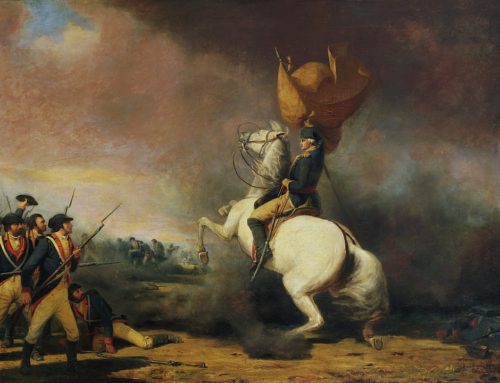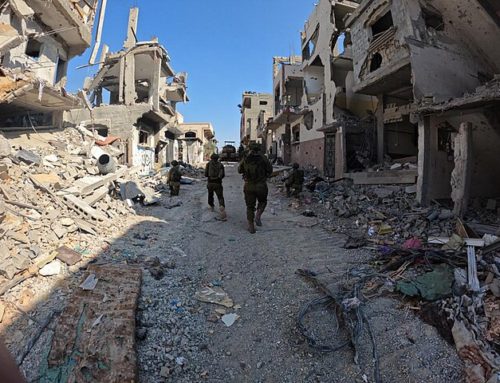In the New York Times article “A Spy’s Path: Iowa to A-Bomb to Kremlin Honor” the newspaper highlighted that Soviet President Vladimir Putin had posthumously given the highest Russian award to a Soviet agent, George Korval. Korval along with other Communists such as Klaus Fuchs, Harry Gold, and Julius Rosenberg penetrated the Manhattan Project and thereby hastened the Soviet development of an atomic bomb by four to six years. Thus, atom bomb spies played an extremely vital role in the Soviet project. The preeminent Soviet scientist working on the Soviet project stated that Soviet espionage accounted for 50% of the projects success.
One must assume that Putin putting his imprimatur on a heretofore obscure spy, George Koval, reflected the growing estrangement between the Soviet Union and the United States. Putin’s recognition of Korval (1) heightened Russian’s nationalism, (2) “tweaked the United States” and (3) added to the prestige of the KGB, his former employer. That is, since the Communist Party lost its monopoly of power over the Soviet Union, KGB files have shown ample evidence that Soviet espionage significantly hastened Russia’s ability to develop an atomic bomb. In summary, Putin was adding “salt” to a wound first opened in the late 1940’s when our government started revealing that the Soviets had infiltrated the super secret Manhattan project.
Who was George Korval?
George Korval was a dedicated communist, who was born in Iowa, but moved with his family when in the 1930’s they emigrated to Birobidzhan, a Siberian city that Stalin promoted as a secular Jewish homeland. The experience of most Americans that expatriated to the Soviet Union was horrendous, but Korval was a salient exception. A brilliant convivial student Korval was a perfect mole for the soviet spy apparatus. When K.R.U (the Soviet military intelligence agency) planted Korval back to the United States his mission was to gather intelligence which he did from 1940-1948. Korval gave the Soviets information on refined polonium 210, a highly radioactive material used to help start the bomb’s chain reaction. This information was gleaned from his work at Oak Ridge, which emphasized the production of bomb fuel, considered the hardest part of the atomic endeavor.
After World War II, Korval fled back to the Soviet Union where he earned a doctorate, lived a long a prosperous existence as part of the communist hierarchy, and died on January 31, 2006 at the age of around 93.
How did Korval penetrate the security apparatus of the United States?
First of all, Korval spoke perfect English being born in Iowa. Secondly, he was a star player in the American pastime—baseball. As we know from the book Field of Dreams, playing the American pastime is a “rite of passage.” Stated differently, only “red blooded Americans” play baseball. Lastly, Korval assiduously avoided any contact with “Communist front organizations” even when attending City College in Manhattan, known as the “Harvard for the poor.” During the early 1950’s City College’s reputation was hurt by its association with Communists, including the infamous Julius Rosenberg.
Korval, along with other émigrés were actively recruited to complement Native Americans in order to provide the necessary manpower and expertise required for the Manhattan project. During the 1930’s, Hungary, Sweden, Great Britain, and Germany possessed much more formidable atomic physic research facilities than available in the United States. Edward Teller, Einstein, and Fermi were just a few of a score of brilliant scientists who sought refuge in the United States after obtaining advanced degrees in Europe. J. Robert Oppenheimer, the Father of the Atomic Bomb, and Isidor Rabi trained in Europe. The United States did not establish a graduate program in nuclear physics until the late 1930’s.
Given the huge manpower requirements for highly skilled physicists to jump start the Manhattan project, the United States actively recruited scientists who had received advanced training abroad in order to build the atomic bomb. The converse of our hasty assemblage of thousands to talented scientists was that our security clearance failed to prevent the involvement of scientists who were prepared to share top secret information with the Russians. Given the reams of documented information released by the KGB after the fall of the communist party in the Soviet Union in the 1990’s, we possess certifiable evidence that Soviet espionage hastened the latter’s nuclear program by at least four to six years.
What information did the KGB steal from the United States?
Between the years 1942-1954 the KGB obtained thousands of pages of technical information about the Manhattan Project.
- Calculations for the construction of plutonium charge
- Information on detonation devices
- Information of the gaseous diffusion factory that produced the U-235
- A report on the study of secondary neutrons
- A report on the metallurgy of uranium and platinum
- Information of the kinetics of atomic reactions.
This information allowed the Soviets to focus on the successful lines of the American project rather than approaching the situation blindly and attacking all possible avenues. Klaus Fuchs admitted that he gave the Soviets the principle design of the plutonium bomb. He gave very important information of how to prevent corrosion. In summary, the information was so complete and valuable that when the U.S. S. R began to build its atomic installation, “its plutonium plant was almost identical size and specifications to “secret Reactor 305 at Hanford, Washington.”
Moreover, the Soviets even borrowed U.S. measurement terms! One Soviet source said that Karl Fuchs provided the Soviets with the method for developing isotope separation and diffusion, saving Russia some $400 million dollars and significant time. Another senior Russian scientist said that the first Soviet atomic bomb was based on a drawing of the U.S. bomb provided to the researchers by spies. Thus, attaining a bomb in the shortest time required copying the American bomb.
This war-torn nation which suffered approximately 13,600,000 military and 7,700,000 civilian casualties, whose industrial base and even country was devastated by World War II, developed the bomb in four years through stealth.



